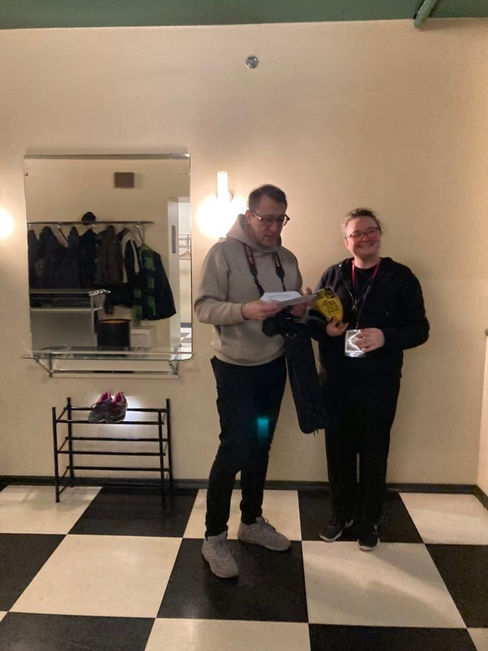Xenia
Peretrukhina
Helsinki,
Finland
March'22 - present
Artist, director, screenwriter, author of performances, installations, videos, film scripts and stage designs for theatre productions. Nominee of the Russian national award in contemporary art "Black Square" (2004), the Kandinsky Prize (2008, the project "Brides of Joseph Beuys"), the national theatre award "Golden Mask" (2013).
MERMAIDS, performance
director - Teodora Liljan
playwright - Roman Dolzhansky
set designer: Ksenia Peretrukhina
The creators of the play complement Pushkin's unfinished play with a finale written for this play by Vladimir Nabokov. This combination allows us to look at this story from different angles. Ksenia Peretrukhina creates a "magical, disturbing and powerful space." Water pipes, bent red taps, black walls, mirrors, an empty and small swimming pool, a television panel. According to Roman Dolzhansky, this is "a kind of intermediate space, between worlds." He also talks about the play: "This little play by Pushkin conceals many mysteries - the author did not finish it, did not title it and did not publish it. To this day, researchers argue about both the genre and the composition of "Mermaid." Many writers and poets have created their own finales to this one-act drama about unhappy love, betrayal and revenge. Already in the 20th century, Vladimir Nabokov, who wrote the most famous version of the ending of the play, could not avoid this temptation. Pushkin himself seemed to suggest that readers and their descendants solve Rusalka each time in their own way, freely fantasize, look for new meanings, relate it to modern times. The young director Teodora Lilyan saw in Pushkin's play not an old fairy tale, but a very modern story played by modern people. What is happiness? - the characters of the play ask themselves and us. At all times, people have answered this question differently - love, family, children, freedom, success. And they always pay with their lives for this choice. Pushkin, of course, also does not know the "correct" answer. He doubts, is sad and reflects together with the viewer, and even - all sorts of unexpected events happen in the theater - he can end up among the characters of the play.
STATE OF THINGS, audio installation
Ksenia Peretrukhina, Anastasia Trizna
and Tony Randall
The project was conceived in the first months after the outbreak of the war and was shown at the Swedish Theatre in Helsinki as part of the NEW THEATRE HELSINKI FESTIVAL. These are refugee objects that have scattered around the theatre, philosophizing and complaining about life. Torn sneakers (1), an evening dress (2), a hat (3), a coat (4), a suitcase (5), a bicycle (8), a lonely sock (7). On the table (6) there is a teapot, a cup with a crack, two teaspoons and sugar. In the toilet downstairs by the mirrors there are five washing machines - an American, a Swedish, a Finnish, a Ukrainian and a Russian, in addition to talking, they sing songs. The hat is near the display case with a laurel wreath, the coat is near the fresco with a tragedy, the dress is near the fresco with a comedy, the bicycle is on the street outside the window, on the canopy of the theatre (for another space it can be remade to fit the existing site-specifics). The numbers are the audio track numbers, in three languages.




































